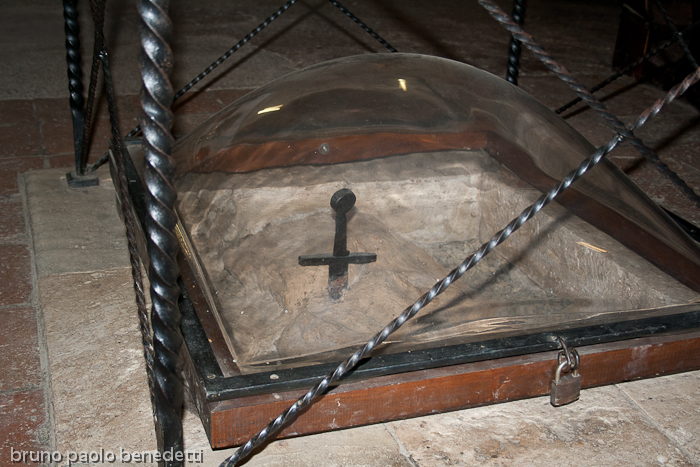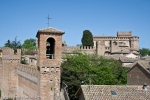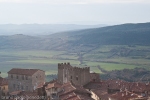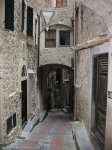
origins
The sword in the stone, in the chapel next to the Gothic Abbey of Saint Galgano at Montesiepi. Archaeological digging may soon unveil its origins, Italian research announced. Known as the “sword in the stone,” the Tuscan “Excalibur” is said to have been plunged into a rock in 1180 by Galgano Guidotti, a medieval knight who renounced war and worldly goods to become a hermit. Built in Galgano’s memory, the evocative Gothic abbey at Montesiepi, near the city of Siena, still preserves the sword in a little chapel. Only the hilt and a few centimeters of the blade protrude from the rock in the shape of a Cross. “The sword has been considered a fake for many years, but our metal dating research in 2001 has indicated it has medieval origins. The composition of the metal doesn’t show the use of modern alloys, and the style is compatible with that one of a 12th century sword,” Luigi Garlaschelli, a research scientist at University of Pavia, told Discovery News.
research
By the summer, Garlaschelli hopes to excavate the area around the stone, in search of the knight’s body. Indeed, ground penetrating radar analysis revealed the presence of a 6 1/2-foot by 3-foot room beneath the sword. “It could well be Galgano’s tomb, sought for about 800 years,” Garlaschelli said. The figure of Galgano Guidotti, who is said to have be born in 1148 in Chiusdino, near Siena, is shrouded in mystery and legend. Evidence of his historical identity has never been found and no records exist in documents from his time. Galgano Guidotti was said to have been an arrogant and lustful knight who isolated himself in a cave and became a hermit after seeing a vision of the Archangel Michael.
legend
Legend has it that, Galgano was lured out by his mother who convinced him to meet with his former beautiful fiancée; on the way to her house, Galgano was thrown by his horse while passing Montesiepi, a hill near Chiusdino. There, another vision told him to renounce material things. Galgano objected that it would be as difficult as splitting a rock with a sword. To prove his point, he struck a stone with his sword. Instead of breaking, the sword slid like butter into the rock. Galgano once again became a recluse, isolating himself by the sword’s side. There he remained until he died in 1181.
how it is related with King Arthur’s legend?
Garlaschelli admitted that the excavation would not unveil another mystery over the sword: the one of the Tuscan “Excalibur” predating the legend of King Arthur. If the sword really dates to 1180, decades before the first literary reference to the “sword in the stone,” it would support the theory that the Celtic myth of King Arthur and his sword Excalibur developed in Italy after the death of Galgano. Further evidence may lie underneath the rock, but the Arthurian link is almost impossible to prove. It will remain one of the many mysteries that surround St. Galgano.
See video with pictures about St. Galgano Abbey on
http://www.youtube.com/watch?v=DCV4BlXi4io
See other photos from Italy
Buy Right Managed license or file for personal use






























































































